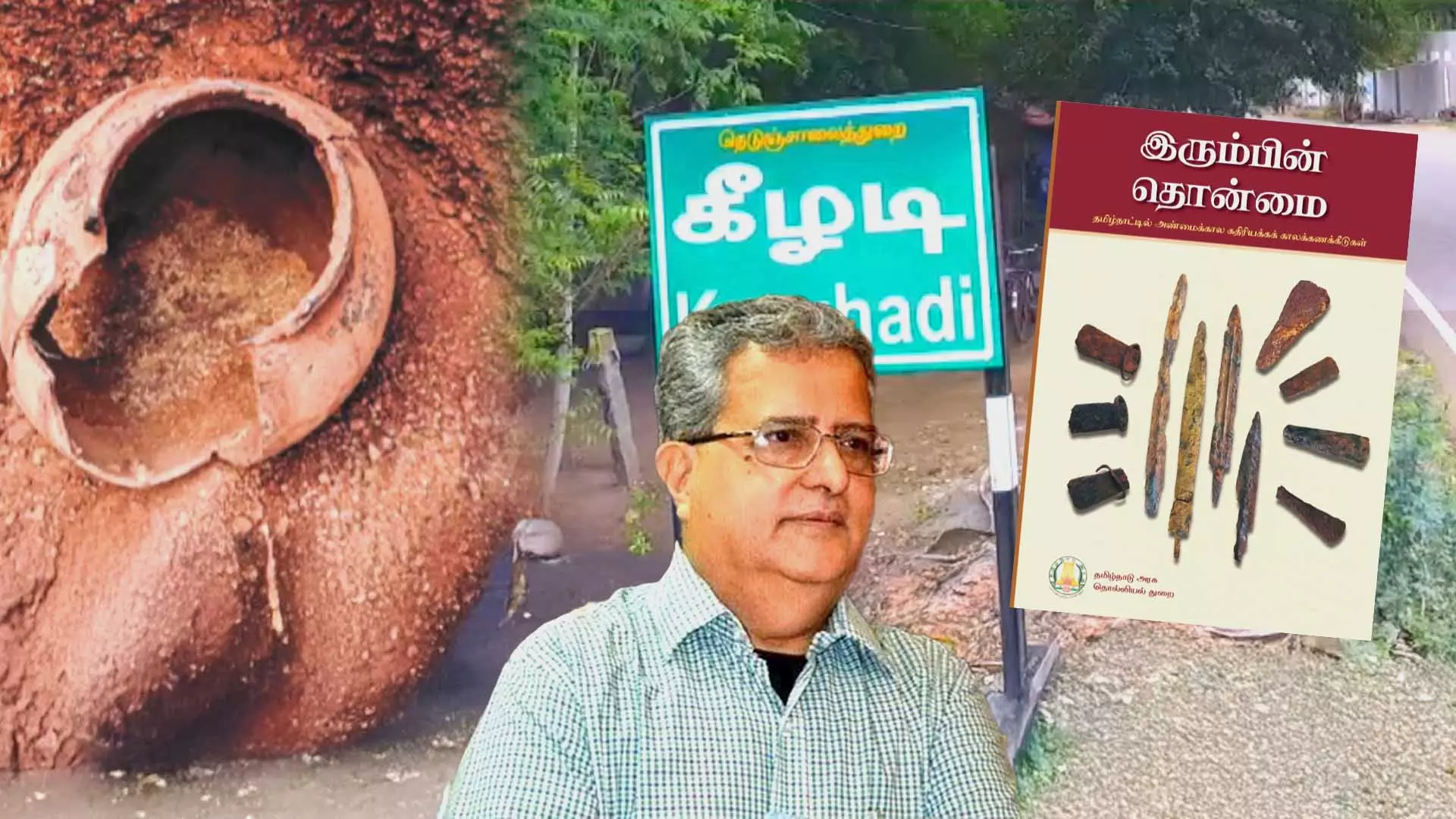
Keeladi-Saraswati excavations lack scientific scrutiny: PA Krishnan
Writer argues recent excavation reports on Keeladi and Saraswati are selectively used to fit biased political, ideological narratives

In an interview with The Federal, writer PA Krishnan spoke about how recent archaeological findings like the Keeladi excavation in Tamil Nadu and the Saraswati excavation claims in North India are increasingly being framed through political, nationalist, and sectarian lenses instead of scientific scrutiny. Edited excerpts:
Can you elaborate on why you believe recent excavation findings, particularly those related to the Saraswati and Keezhadi, suffer from a lack of objectivity?
In both the cases, there is a preconceived idea, and researchers try to fit the results to make that idea look scientific. My objection is only to that.
You have said the reports lack scrutiny. What are the major flaws, and how does this affect public understanding?
Take the Saraswati excavation. Most of what is available is in newspapers, clippings, and interviews. I have not come across a single scientific paper on the recent Saraswati excavation — I’m not talking about Rakhigarhi — but the new work on the river. People keep making claims that aren’t strictly correct.
Also read: Keeladi excavation fuels India’s ancient civilization origin debate
Earlier, we had alert reporters covering these stories. Now, such reporting has become rare. What happens is that, in both North India and Tamil Nadu, politicians take over. Archaeological investigations are hijacked by political interests and by those following certain ideologies. If archaeologists themselves lean toward an ideology, the problem becomes worse. This is unfortunate and not good for serious archaeology, which should adhere to scientific principles.
You have argued that evidence from Keezhadi is inconclusive. Why do you think so, and what would constitute solid proof of an urban civilisation?
There are several claims made by the Tamil Nadu government. One, they say that the Keezhadi excavation dates back at least 2,580 years. Two, they call it a river valley and urban civilisation. Three, they hint at links with the Indus Valley civilisation. Four, they mention the Brahmi script.
Also read: Keeladi excavation report vetted; deficiencies flagged in methodology, interpretation
While the government’s report doesn’t explicitly say that Keezhadi is linked to the Indus Valley, some people associated with the project imply such connections. Now, let’s look at the dating. The report says that at a particular stratigraphic layer, they found potsherds with graffiti and bits of charcoal.
This charcoal was sent to a lab, which returned five dates. One of them pointed to the 3rd or 4th century CE, but that was ignored. Even if we take the 580 BCE date, the assumption is that the charcoal and the artefacts are of the same age.
What’s happening is that people form a theory and then use archaeological findings selectively to make it sound correct. That is my objection.
Who, in your view, is driving these narratives?
There are two sets of people. Nationally, there are those who want to deny the Aryan migration theory, insisting that people have always lived in India and that civilisation spread from here to other places. On the Tamil Nadu side, some want to prove that the state is a unique island, untouched by outside influence — that its cultural “flowering” happened entirely on its own.
They also suggest, though not openly, that the Brahmi script originated only in Tamil Nadu and spread to the rest of India. Another claim is that there was a vibrant urban river valley civilisation flourishing along River Vaigai, and Keezhadi proves it. I contest these claims.
In the Indus Valley, you find roads, buildings, and brick structures. What do we have at Keezhadi? Not much. Photographs show a single wall — but one wall does not make a city. Where are the roads, the habitats, the evidence of people living there?
Also read: Keeladi report: Politics, proof, and buried history | Explainer
Please don’t misunderstand me. I’m not saying we will never discover a major civilisation there. I’m only saying that, with the evidence currently available, it is not possible to conclude that a great urban civilisation existed at Keezhadi or that it was part of a river valley civilisation.
The content above has been transcribed from video using a fine-tuned AI model. To ensure accuracy, quality, and editorial integrity, we employ a Human-In-The-Loop (HITL) process. While AI assists in creating the initial draft, our experienced editorial team carefully reviews, edits, and refines the content before publication. At The Federal, we combine the efficiency of AI with the expertise of human editors to deliver reliable and insightful journalism.

